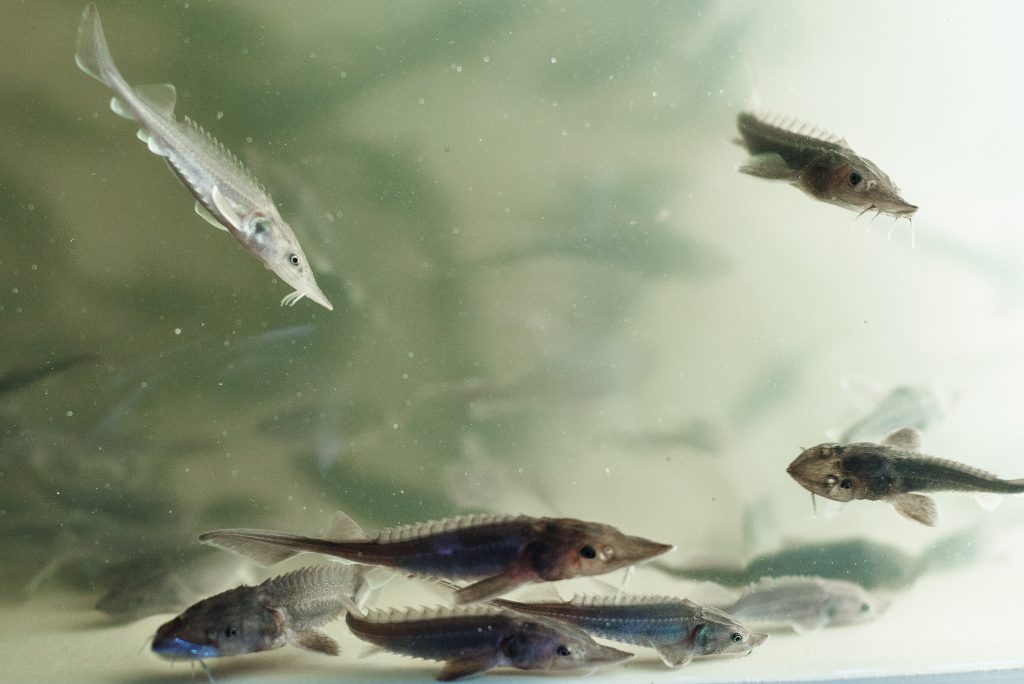
Features
From the Editor: For a better future
December 9, 2021 By Catarina Muia
 Sturgeon swimming. Photo: Glavrybvod
Sturgeon swimming. Photo: Glavrybvod With the new year upon us, it’s exciting to think about the new projects, ventures, studies, and innovations that will be introduced in 2022 and may one day, make a positive impact not only on the hatchery and aquaculture industries, but on the seafood production industry, as well as the ecosystem and environment as a whole.
Since childhood, I can remember climate change and its affects coming up as topics of discussion frequently, but it wasn’t until early adulthood that I understood the weight of the situation. It was less common to hear about ‘endangered’ species, but every time I’d hear about a new endangered species, my heart would sink a little. As a child, you don’t know what to do, or how to help, and you only hope the adults know what they’re doing and how to fix the problem.
Today, seeing how the hatchery and aquaculture industries are working to research, study, understand, protect, and rejuvenate at-risk populations is truly inspiring. In all three of this issue’s feature articles, we delve into how three species have seen population depletions, and industry workers are doing everything they can to protect them.
As Siberia has seen a decrease in Siberian sturgeon populations, Russian government agency, Glavrybvod, is looking to restock populations through Abalakskiy, one of the largest hatcheries in Siberia. “The main purpose of Glavrybvod is to restore hampered fish populations back to the conditions large enough to resume fishing. We work with the Siberian sturgeon because it is enlisted in the Russian Red Book of endangered species,” said Vitaly Baranov, director of the Nizhniy-Obskiy branch of Glavrybvod. “If our production will remain at the current level, we expect sturgeon to regain commercial value by 2030.” Read the full article, on page 12.
Due to habitat destruction, overfishing, and invasive species, lake whitefish populations in the fishery located in the North American Great Lakes, have greatly depleted. To combat this and open up the option to commercially fish lake whitefish, researchers are looking into the feasibility of rearing the species as currently, there is only one lake whitefish farm in North America. “There has been a lot of interest in lake whitefish culture from two sectors: established net-pen operators are looking to diversify into new species and see lake whitefish as a good option,” said Marica Chiasson, head of the feasibility pilot project, “and from potential recirculation aquaculture system (RAS) operators who see lake whitefish as a species with good potential for land-based grow out.” Read the full article on page 16.
These studies and projects are no easy feat and require great minds, funding, passion, and dedication, which makes me excited to see how they all pan out, and I hope that in the future, I’ll have the opportunity to write about their successes!
With that, I leave you to read this issue of Hatchery International magazine.
Happy reading, Catarina Muia
Print this page
Advertisement
- Kingfish announces milestone for new U.S.-based facility
- Mowi Chile uses Garware fabric against sea lice





